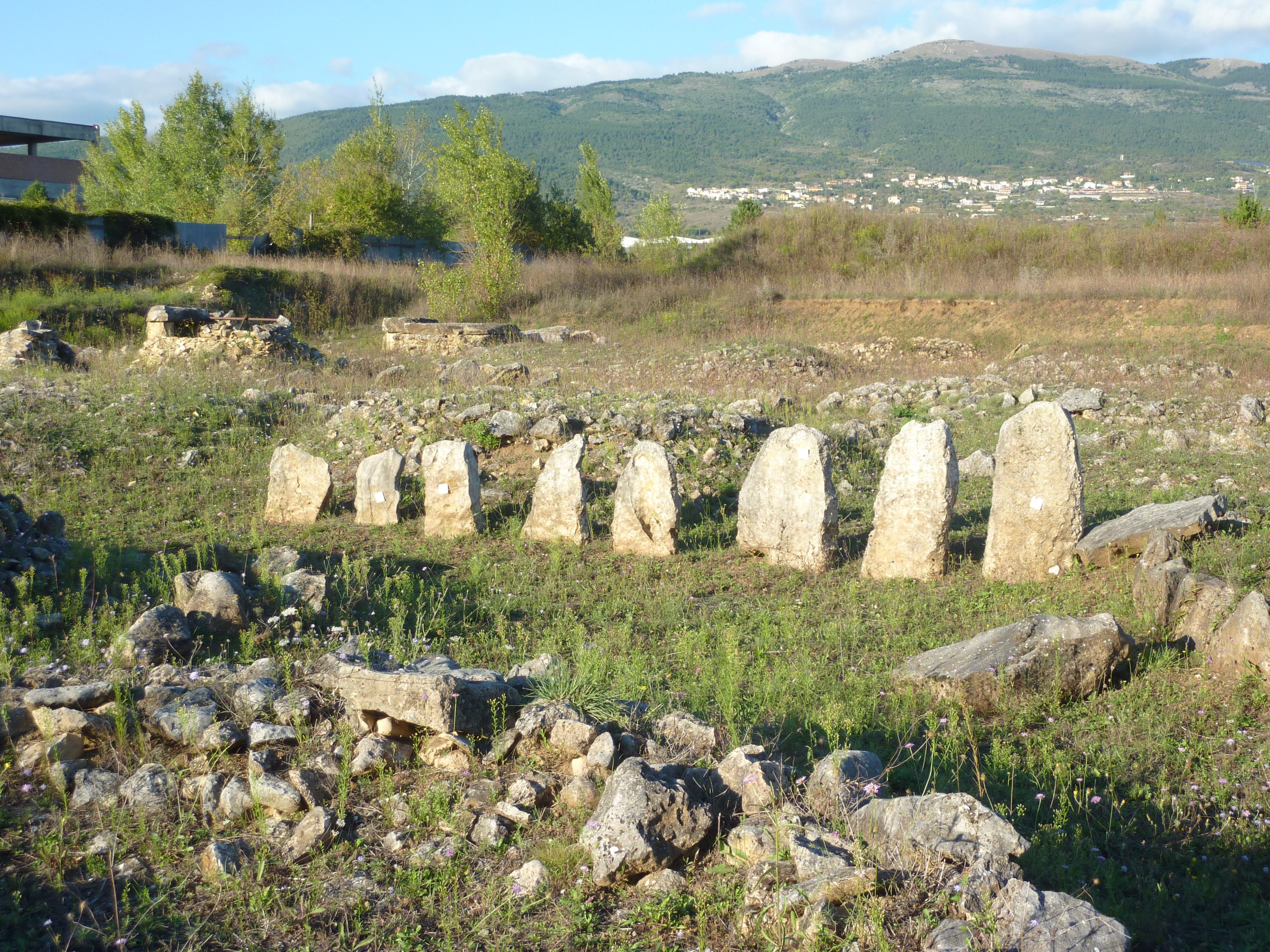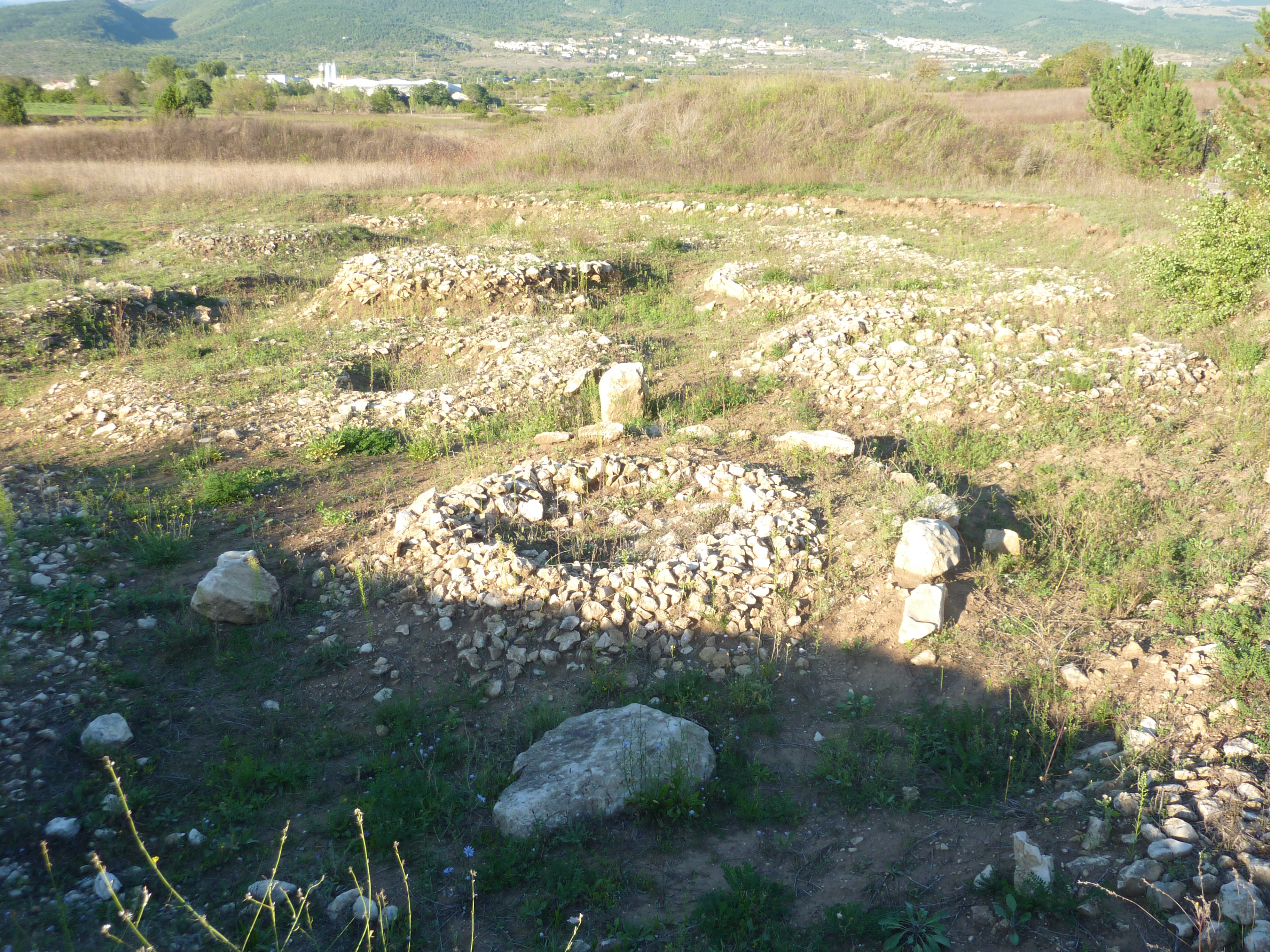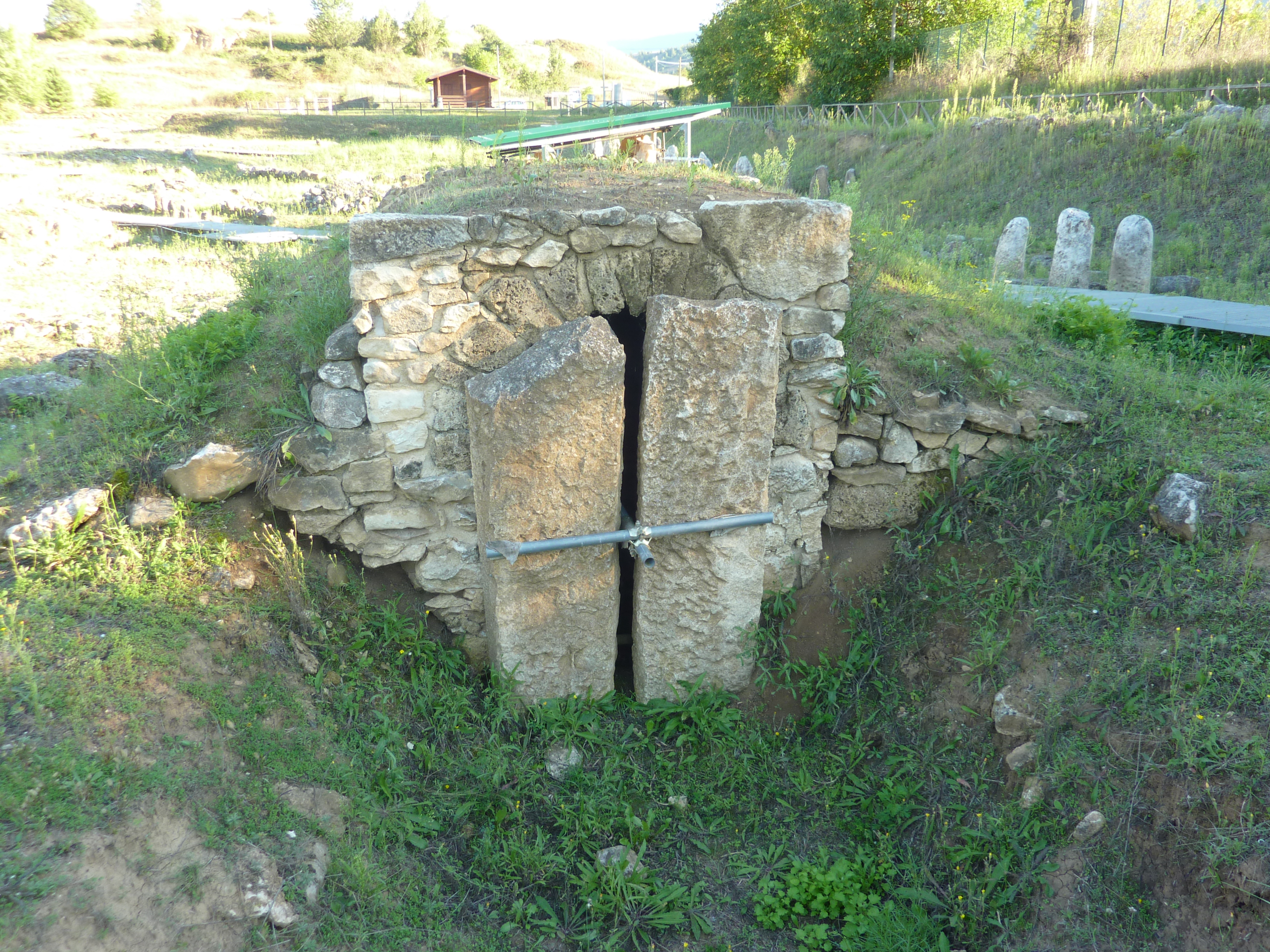Necropolis Of Fossa on:
[Wikipedia]
[Google]
[Amazon]
Necropolis of Fossa was an Italic necropolis, the ruins of which are located in the
 The origins of the necropolis of Fossa are attributed to the first population residing in the area, the
The origins of the necropolis of Fossa are attributed to the first population residing in the area, the
 In the following two centuries (8th-6th century BC), both pits and tumuli continued to be built, though the latter were now around 4 meters in diameter, and the lines of menhir for male tombs disappeared.
Regarding the grave goods, female tombs continued to contain jewelry, while male tombs contained weapons, including chest-protecting discs similar to those worn by the
In the following two centuries (8th-6th century BC), both pits and tumuli continued to be built, though the latter were now around 4 meters in diameter, and the lines of menhir for male tombs disappeared.
Regarding the grave goods, female tombs continued to contain jewelry, while male tombs contained weapons, including chest-protecting discs similar to those worn by the
 In the first phase (4th-3rd century BC), the tombs were exclusively pit graves for single burials. The grave goods no longer contained weapons but included ceramics and jewelry.
In the late Hellenistic period (2nd-1st century BC), monumental forms returned with chamber tombs, family hypogea with a quadrangular plan made of stone, accessed via a corridor with an entrance closed by one or two vertical stone slabs. Among the grave goods, notable items include funerary beds made of wood and leather, decorated with zoomorphic and anthropomorphic bone elements.
Other types of tombs in this period include box tombs (with stone or wooden walls), tombs with monumental markers, simple pit graves, and infant burials in ceramic tiles.
In the final century (1st century BC), alongside inhumation, cremation became widespread. The ashes of the deceased were collected in a jar closed with a flat stone or a ceramic lid and placed in the tomb without any grave goods.
In the first phase (4th-3rd century BC), the tombs were exclusively pit graves for single burials. The grave goods no longer contained weapons but included ceramics and jewelry.
In the late Hellenistic period (2nd-1st century BC), monumental forms returned with chamber tombs, family hypogea with a quadrangular plan made of stone, accessed via a corridor with an entrance closed by one or two vertical stone slabs. Among the grave goods, notable items include funerary beds made of wood and leather, decorated with zoomorphic and anthropomorphic bone elements.
Other types of tombs in this period include box tombs (with stone or wooden walls), tombs with monumental markers, simple pit graves, and infant burials in ceramic tiles.
In the final century (1st century BC), alongside inhumation, cremation became widespread. The ashes of the deceased were collected in a jar closed with a flat stone or a ceramic lid and placed in the tomb without any grave goods.
comune
The (; plural: ) is a local administrative division of Italy, roughly equivalent to a township or municipality. It is the third-level administrative division of Italy, after regions ('' regioni'') and provinces (''province''). The can also ...
of Fossa
Fossa may refer to:
Animals
* Fossa (animal), the common name of a carnivoran mammal of genus ''Cryptoprocta'' endemic to Madagascar
* ''Fossa'', the Latin genus name of the Malagasy civet, a related but smaller mammal endemic to Madagascar
Pla ...
, in the province of L'Aquila
The Province of L'Aquila ( it, Provincia dell'Aquila) is the largest, most mountainous and least densely populated province of the Abruzzo region of Central Italy. It comprises about half the landmass of Abruzzo and occupies the western part o ...
in the Abruzzo
Abruzzo (, , ; nap, label=Neapolitan language, Abruzzese Neapolitan, Abbrùzze , ''Abbrìzze'' or ''Abbrèzze'' ; nap, label=Sabino dialect, Aquilano, Abbrùzzu; #History, historically Abruzzi) is a Regions of Italy, region of Southern Italy wi ...
region of Italy
Italy ( it, Italia ), officially the Italian Republic, ) or the Republic of Italy, is a country in Southern Europe. It is located in the middle of the Mediterranean Sea, and its territory largely coincides with the homonymous geographical re ...
.
History
Vestini
() were an Italic tribe who occupied the area of the modern Abruzzo (central Italy), included between the Gran Sasso and the northern bank of the Aterno river. Their main centres were ''Pitinum ''(near modern L'Aquila), ''Aufinum ''(Ofena), ''Pe ...
on Monte Cerro, where remains of a fortified village dating back to between the 9th
9 (nine) is the natural number following and preceding .
Evolution of the Arabic digit
In the beginning, various Indians wrote a digit 9 similar in shape to the modern closing question mark without the bottom dot. The Kshatrapa, Andhra and ...
and 8th century BC
The 8th century BCE started the first day of 800 BC and ended the last day of 701 BC. The 8th century BC is a period of great change for several historically significant civilizations. In Egypt, the Twenty-third Dynasty of Egypt, 23rd and Twent ...
can be found. Later, the development of Aveia Aveia was an ancient town of the Vestini and Roman former bishopric, which remains a Latin Catholic titular see.
Its site is on the Via Claudia Nova, c. 10 km south-east of L'Aquila, N.E. of the modern village of Fossa, in central Italy's A ...
during the Roman era continued its use until around the 1st century BC
The 1st century BC, also known as the last century BC and the last century BCE, started on the first day of 100 BC and ended on the last day of 1 BC. The AD/BC notation does not use a year zero; however, astronomical year numberi ...
.
The area is located in an alluvial zone on the eastern bank of the Aterno
The Aterno-Pescara (ancient ''Aternus'' from the Greek ''Aternos'', ''Άτερνος'') is a river system in Abruzzo, eastern central Italy. The river is known as the Aterno near its source in the mountains, but takes the name Pescara, actually a ...
river. It was discovered accidentally in 1992 during excavations for the construction of an industrial warehouse.
The excavated area covers 3,500 m², with approximately 500 tombs of different types (tumuli, pits, chamber tombs, and infant burials in ceramic tiles) dating back to three main periods.
Iron Age
In the first two centuries (9th and 8th centuries BC), the tombs primarily consisted of tumuli and simple pits dug into the ground. The tumuli were constructed with mounds of earth and stones, typically measuring between eight and fifteen meters in diameter, enclosed by stone circles. Some male tumuli featured a line ofmenhir
A menhir (from Brittonic languages: ''maen'' or ''men'', "stone" and ''hir'' or ''hîr'', "long"), standing stone, orthostat, or lith is a large human-made upright stone, typically dating from the European middle Bronze Age. They can be foun ...
of decreasing height from the inside out.
Inside the tumulus was the pit where the deceased and some of their personal effects, typically ceramic or bronze vessels, razors, and weapons for men, and jewelry for women, were buried.
Orientalizing and Archaic Ages
Warrior of Capestrano
''The Warrior of Capestrano'' is a tall limestone statue of a Picentes, Picene warrior, dated to around the 6th century BC. The statue stands at around 2.09 m. It was discovered accidentally in 1934 by a laborer ploughing the field in the Italian ...
. In addition to local ceramics, imported vases, typically Etruscan, appeared.
By the 6th century, the use of tumuli ended, and simple pit graves became prevalent. Additionally, infant burials began, where newborns were placed in a ceramic tile and covered with another.
Hellenistic Age
References
Bibliography
* * * *External links
* {{Authority control Archaeological sites in Abruzzo Fossa, Abruzzo Necropoleis Cemeteries in Italy